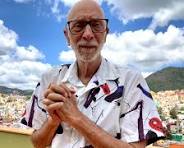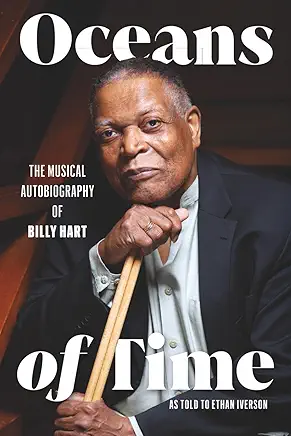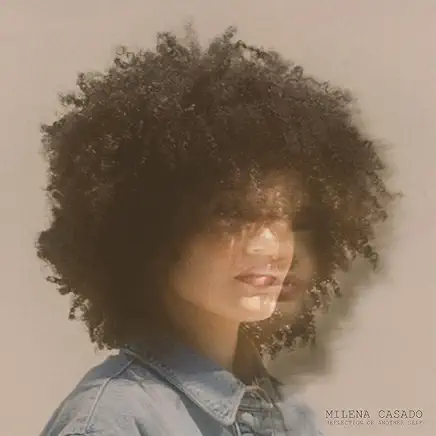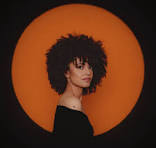Bret Primack has had a remarkable evolution as an advocate for jazz – from nascent jazz journalist to stringer, to editor, to a short colorful time adopting a jazz community hangman’s posture as the infamous online snarkster known as The Pariah, to serious filmmaker, he has never lost his thirst or reverence for the art form. And for him that quest is at least in large part guided by his Northstar – John Coltrane. Bret’s 2025 book How John Coltrane Changed Me details that journey and how the depth of Coltrane’s shining example has been a constant guidepost in his quest. Clearly the Independent Ear had some questions for Bret Primack.

When and how did you determine that your immersion in John Coltrane’s music and his personna “changed” you and your own pursuit?
I noticed the change in stages, not all at once. Early on, I listened for
technique and innovation. I was a young journalist trying to understand
what made Coltrane different from other saxophonists, what separated his
harmonic approach from the bebop tradition he came out of. I studied the
sheets changes, analyzed his solo construction, thanks to Andrew White,
who transcribed many of Trane’s solos, and focused on what could be
measured and explained.
Later, the music began to feel less theoretical and more personal. It
stopped being about what he was doing and started being about what he
was asking of me as a listener. The music began to feel demanding, even
confrontational. It was no longer background or entertainment. It required
presence, attention, a willingness to meet it halfway.
The turning point came when I spent sustained time with his late work,
especially Ascension, Transition, Mediations, and Interstellar Space. The
intensity forced a question I couldn’t avoid. Why was he willing to lose
audience approval, commercial success, and critical favor in order to tell a
deeper truth? He had achieved everything a jazz musician could want – Security. Respect. A devoted following. And he walked away from all of it to pursue something most people couldn’t hear or didn’t want to hear.
That willingness to risk everything, to choose artistic and spiritual integrity
over comfort, shook something loose in me. It wasn’t just admiration
anymore. It was recognition. I understood that he was showing me a
template for how to approach a life in the arts, or really any life that
demands something from you beyond the surface.At that point, Coltrane stopped functioning as a musician I admired from a distance. He became a model for how to live inside a calling, how to
answer it even when the cost is high. Discipline, sacrifice, and total
commitment moved from abstract ideas I talked about into daily practice,
into decisions I had to make about my own work.
My own pursuit shifted after that. I stopped aiming primarily for polish or
validation. I stopped worrying so much about whether the work would
please an audience or fit into established categories. I started aiming forwhen they didn’t conform to what people expected from me.That shift has stayed with me for decades now. It shapes how I work, how I judge success, and how I measure growth. It’s why I can walk away from conventional publishing if the terms don’t honor the work. It’s why I can keep creating content without worrying whether it reaches millions or a few hundred people who actually care. It’s why I can live in Mexico, far from the industry centers, and still feel connected to the work that matters.
Coltrane taught me that the calling is the thing. Not the applause. Not the money. Not the recognition. The calling itself, pursued with full devotion, becomes the measure of a life. That’s the change he worked in me. And once you see it that clearly, you can’t unsee it.

Of all the artsts you’ve interacted with and been influenced by, how and why has John Coltrane withstood the test of time and remained such an enduring influence on your “jazz journey”?
Many artists influenced me at specific moments over nearly fifty years in
this music. They shaped taste, technique, or direction during particular
phases of my development. Miles taught me about space and economy.
Ornette showed me how to question structure. Monk revealed the power of
deliberate awkwardness. Bill Evans demonstrated how to make beauty
without sentiment.
Most of those influences faded once the problem they
helped me solve was resolved. They became part of my foundation,
essential but no longer active in my daily thinking. Coltrane endured because his work operates on multiple levels at once, and those levels don’t exhaust themselves. There is craft at the surface:
harmonic sophistication, rhythmic invention, the sheer technical command
of his instrument. There is discipline in the documented practice regimen,
the relentless pursuit of mastery. There is historical importance as the
bridge between bebop, modal jazz, and free improvisation. All of that would
be enough to secure his legacy.
But underneath, woven through every phase of his evolution, there is an
ethical and spiritual dimension that continues to ask something of the
listener. His music poses questions that don’t have final answers. What
does it mean to dedicate your life to something larger than yourself? How
do you balance artistic ambition with spiritual humility? When do you honor tradition and when do you break from it? How much are you willing to sacrifice for truth?
His music does not settle into comfort or nostalgia. Each return reveals a
new demand. Greater honesty in my own work. Greater focus when the
distractions multiply. Greater surrender to the work itself, even when the
results don’t match the effort. I can listen to A Love Supreme for the
hundredth time and still hear something I missed, still feel challenged by
what it’s asking of me.
Other artists expanded my vocabulary. They gave me new words, new
concepts, new ways of hearing. Coltrane reshaped my values. He changed
what I thought art was for, what a creative life could demand, what success
actually means when measured against inner necessity rather than
external validation. He framed jazz not as a style or a career path but as a
lifelong practice, something closer to a spiritual discipline than a profession.
That distinction matters more now than it did when I was younger. In my
twenties and thirties, I was building a career, establishing credibility, trying
to make a name. Coltrane was important then, but so were many others. In
my forties and fifties, as I weathered industry upheavals and had to
reinvent how I worked, Coltrane became more essential. His example of
walking away from commercial success to pursue a deeper calling gave me
permission to do the same.
Now, in my seventies, having written a book about how his music changed
my life, I understand that he never was just an influence in the conventional
sense. He was and remains a moral anchor, a reminder of what matters
when everything else falls away. He helps me distinguish between what I
want and what I’m called to do. Between work that satisfies ego and work
that serves something larger.
That is why he remains central to my jazz journey and to my life beyond
jazz. He is not a reference point from the past, not a chapter I’ve moved
beyond. He functions as a compass I still check when I’m uncertain, when
the path forward isn’t clear, when I need to remember why I’m doing this
work in the first place. His music still asks: Are you being honest? Are you
going deep enough? Are you willing to lose approval in order to find truth?
Those questions don’t expire. And as long as they remain alive in me,
Coltrane remains the enduring influence.
If there was one “aha”moment in your study of John Coltrane, what would that be and why?
The aha moment arrived with A Love Supreme, but not on first hearing. I
had listened to that album dozens of times over the years, moved by its
beauty, impressed by its architecture. But the transformation came later,
when I read Coltrane’s handwritten notes and letters alongside the music,
when I understood what he was actually trying to do.
The music stopped sounding like artistic expression and started sounding
like spiritual obligation. This wasn’t a man showing off his abilities or trying
to impress an audience. This was a man fulfilling a vow, keeping a promise
made in a moment of desperation and grace. He had nearly destroyed
himself with heroin and alcohol. He found a way out, or was shown a way
out, and A Love Supreme was his response. His thank you. His testimony.
Coltrane treated music as service, not self-expression. Practice served
truth, not technique. Performance served something larger than ego,
audience, or career advancement. Every decision, every note choice, every
structural innovation answered a single question: Does this move the work
closer to honesty? Does this honor what I’ve been given?
From that point forward, the entire arc of his music felt unified in a way I
hadn’t grasped before. The lush ballads from the early sixties, the sheets of
sound from the late fifties, the free improvisation of his final years, the
almost unbearable intensity of records that drove away half his audience,
all of it pointed in the same direction. The surface changed constantly. The
modes shifted. The band personnel evolved. But the underlying
commitment never wavered. He was always asking: How close can I get to
the thing itself? How much of the truth can I bear to tell?
That realization clarified my own path in ways I’m still discovering decades
later. Jazz stopped being primarily about style or mastery or belonging to a
tradition. Those things still mattered, but they became secondary. Jazz
became a discipline with ethical weight, a practice that demanded more
than skill. It demanded integrity. It demanded that you keep going even
when the work got harder, even when the audience thinned, even when the
industry stopped paying attention.
I understood then why Coltrane kept pushing into more difficult, more
uncompromising territory in his final years. He wasn’t being perverse or self-indulgent. He was following the logic of his commitment to its inevitable conclusion. If music is service, if the work serves truth, then you go wherever truth leads, regardless of consequences. You don’t stop because
it becomes commercially unviable. You don’t compromise because people
stop understanding. You keep answering the call.
That single insight reordered everything. It explained why I could never be
satisfied with just reporting on jazz, why I had to make videos, write books,
keep pushing into new forms even when it made no business sense. It
explained why I walked away from conventional publishing when the terms
felt wrong, why I can live far from industry centers and still feel connected
to the work, why I measure success by depth rather than reach.
Once seen, the idea never left. It became the organizing principle.
Coltrane’s work keeps returning to me, keeps demanding attention,
because his central question remains unfinished in my own life. Am I
serving the work or serving myself? Am I going as deep as I can go or
stopping where it feels safe? Am I willing to risk failure, misunderstanding,
even obscurity if that’s what honesty requires?
These aren’t questions you answer once. They’re questions you live with,
questions that reshape themselves as circumstances change. And every
time I return to A Love Supreme, every time I read those handwritten notes
where he thanks God for the gift and promises to use it well, I’m reminded
that the work isn’t about me. It’s about what moves through me when I get
out of the way. That’s the aha moment that never stops arriving. That’s why
Coltrane remains present tense rather than past tense in my life.
If you could recommend five “desert island” John Coltrane discs to people new to his work, what would those be and why?
I chose these five because they map the complete arc of Coltrane’s
transformation while remaining approachable entry points, even for
listeners who think they don’t understand his later work.
Coltrane’s Sound (1960) comes first because it captures him at a pivot
point. He had left Miles Davis, established his own voice, but hadn’t yet
become the figure who would polarize audiences. The playing here is
assured, lyrical, and accessible. The quartet is locked in. You hear his
harmonic sophistication without the intensity that would come later. This is
Coltrane before the spiritual crisis became audible, when beauty and swing still dominated. For new listeners, this album says: relax, this is still jazz you can recognize, but notice the searching quality already present underneath the elegance.
My Favorite Things (1961) represents his first major breakthrough into
popular consciousness. The title track became his signature, the soprano
saxophone became his second voice, and the modal approach opened up
space for extended exploration without the relentless chord changes of
bebop. What makes this essential is how it demonstrates his ability to take
a simple tune and find infinity inside it. The hypnotic vamp, the circular
structure, the way he builds intensity through repetition and variation rather
than complexity, all of this points toward the spiritual dimension that would
define his final years. New listeners often find this album the easiest
gateway because the melodies are memorable and the grooves are
undeniable.
Duke Ellington and John Coltrane Duke Ellington (1962) matters for different reasons.
Here you hear Coltrane in conversation with his elder, showing respect and
restraint while still being unmistakably himself. The pacing is relaxed. The
interplay between Ellington’s piano and Coltrane’s tenor feels like two
masters speaking the same language from different generations. This
album proves Coltrane never abandoned tradition even as he pushed
beyond it. For new listeners intimidated by his reputation as a revolutionary,
this collaboration demonstrates his deep roots, his humility, and his ability
to serve a song rather than dominate it.
A Love Supreme A (1964) is non-negotiable. This is the culmination of
everything that came before and the doorway to everything that followed.
It’s structured enough to feel comprehensible, spiritual enough to transcend
genre, passionate enough to move people who know nothing about jazz
technique. The four-part suite has narrative logic. The vocal chant gives
listeners something to hold onto. The intensity never crosses into chaos.
This is Coltrane at his most focused, most unified, most clear about his
purpose. If someone hears only one Coltrane album in their life, it should
be this one, because it contains both the accessible beauty and the
uncompromising vision that defined him.
Ascension (1965) completes the picture by showing where the spiritual
quest led when pushed to its absolute limit. This is the album that divided
his audience, the one that sounds like collective prayer or exorcism
depending on your perspective. It’s not easy listening. It’s not meant to be. But it’s essential for understanding what Coltrane was willing to risk in pursuit of truth. The expanded ensemble, the free improvisation, the sheer volcanic energy, all of it represents his refusal to stay comfortable once he
understood what the music was asking of him. For new listeners, I recommend this last, after they’ve absorbed the earlier work, so they can hear it not as noise but as the logical extension of everything he believed about music as service.
These discs together tell a complete story. Early mastery, popular
breakthrough, respect for tradition, spiritual fulfillment, and radical
transformation. They show the progression from craftsman to seeker to
prophet. And crucially, each one still rewards repeated listening decades
later. They’re not museum pieces. They remain alive, demanding, capable
of changing how you hear everything that comes after.
That’s why these five would sustain me on a desert island. They contain
not just beautiful music but a template for how to live a committed life.
How did you go about working on this book, and how long did that journey take?
I worked on the book in layers rather than straight through. Research,
listening, writing, and revising overlapped for years, but not in any orderly
progression. The process was more organic than methodical, more
accumulation than construction.
The earliest material began as notes and short reflections, fragments
written without any book in mind. I kept notebooks where I’d jot down
thoughts after hearing certain recordings, observations about how
Coltrane’s approach connected to spiritual practices I was studying,
memories of conversations with musicians who had known him or been
influenced by him. These weren’t drafts. They were attempts to understand
what I was hearing and why it mattered so much to me personally.
Over time, patterns emerged that I hadn’t planned or anticipated. Personal
experiences from my own life started to align with Coltrane’s chronology
and artistic shifts in ways that felt almost uncanny. His struggles with
addiction mirrored periods when I was wrestling with my own demons. His
breakthrough moments corresponded to turning points in my career. His
willingness to risk everything in pursuit of truth reflected decisions I was
facing about whether to stay in the industry mainstream or follow a more independent path. The book wasn’t forcing these connections. They were already there, waiting to be recognized.
The actual focused writing came much later, during a seven-month
intensive period where I stepped away from almost everything else. By
then I had been living with this material for decades. I had the listening
experience, the research, the personal history, and enough distance to see
the shape of what I wanted to say. Once the structure was clear, once I
understood this was a book about transformation rather than biography or
music criticism, the manuscript moved faster. Not easily, but with
momentum and direction.
Revision took as long as the initial drafting, maybe longer. Mostly cutting
and tightening. Removing anything that felt like showing off, anything that
distracted from the central narrative, anything that explained too much
instead of trusting the reader. I had to resist the journalist’s habit of over-
documenting. This wasn’t a reference work. It was a testimony about what
happens when you let an artist’s vision reshape your values and your life.
From first notes to publication, the journey took decades. Not decades of
continuous work, but decades of living with the questions Coltrane’s music
posed, testing his principles against real circumstances, discovering
whether his example could actually guide a life in the arts.
The book reflects that accumulation. It couldn’t have been written quickly because the
understanding it required only came through time, through failure and
recovery, through watching my career evolve and the industry transform
around me.
There’s also the fact that I had published two previous books twenty years
earlier and then stopped writing books entirely. I went into video production,
built the YouTube channel, adapted to new media. Coming back to long-
form writing after that gap meant relearning the form, finding my voice
again on the page rather than on camera. That transition took time too.
The seven-month intensive period felt less like creating something new and
more like excavating something that had been forming underground for
years. I was discovering what I already knew but hadn’t yet articulated.
Coltrane’s music had been working on me all that time, even when I wasn’t
consciously writing about it. The book documented that long
transformation.
What surprised me most was how the act of writing clarified things I thought
I already understood. Putting the experience into sentences forced a
precision that internal reflection never required. I had to commit to specific
language, specific claims, specific interpretations. That discipline revealed
gaps in my thinking and pushed me deeper into both the music and my
own history.
So when people ask how long it took, the honest answer is: most of my
adult life. The manuscript itself came together in months. But the book
behind the manuscript took fifty years.
What are you working on these days in your writing?
I just finishing writing a film that I’m producing for release in 2026, the
centennial anniversary of Coltrane’s birth. The central premise is: Why
would John Coltrane, a musical master leading one of the most popular
groups in jazz, at the peak of his success, so completely transform his
music that he alienated both listeners and critics?
That’s the central mystery of Coltrane’s artistic journey, and it cuts to the
heart of what drove him. By 1965, Coltrane had everything. A Love Supreme was both a critical
triumph and a commercial success. His classic quartet was revered. He
was selling out concerts, making real money, respected by musicians and
audiences alike. He could have kept mining that territory for the rest of his
career. Instead, he dismantled it all.
He brought on Pharoah Sanders with his shrieking, overblown tenor. He
added Rashied Ali’s polyrhythmic drumming that clashed with Elvin Jones
until Elvin finally left. He stretched performances into 40-minute
explorations that abandoned conventional melody and harmony. The music
became dense, intense, confrontational.
The backlash was immediate and harsh. DownBeat critics who’d
championed him now called the music “gibberish” and “anti-jazz.” Longtime
fans walked out of concerts. Even musicians who respected him were
baffled.
So why? Coltrane was on a spiritual quest that wouldn’t let him stay comfortable.
After years of heroin addiction, after finding sobriety and spiritual
awakening, he saw music as prayer, as a vehicle for transcendence. He
studied Indian ragas, African rhythms, modal approaches. He was trying to
reach something beyond entertainment, beyond even art as people
understood it.
He said he wanted his music to be “a force for good,” to uplift people
spiritually. That required pushing past beauty into something rawer, more
ecstatic, more genuinely transformative. Comfort and popularity weren’t the
goal. Spiritual truth was. It cost him. But he didn’t waver. He followed the sound he heard in his
head, even knowing what it would cost, right up until his death in 1967 at
age 40.
That’s the paradox: his commercial and critical suicide was an act of
absolute artistic integrity. He chose spiritual honesty over success. Not
many artists have that kind of courage.
This approach differs completely from my usual filmmaking process.
Typically, I begin with a loose idea, conduct interviews, and discover the
structure organically as I assemble the material. This time, I already have a
script in place, and the interviews serve to illuminate and reinforce what’s
already written rather than generate the framework itself.







